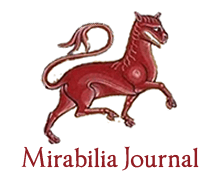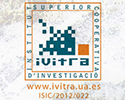The royal entries in the kingdom of Castile towards the end of the Middle Ages: the sound universe of power
Gisela CORONADO SCHWINDT
Original title: Las entradas reales en el reino de Castilla hacia el final de la Edad Media: el universo sonoro del poder
Published in Senses and sensibilities in classical and medieval worlds
Keywords: Castile, History of the senses, Royal entries, Sounds.
In this study, we will make a first approximation to one of the most complex festive events of the Castilian low - medieval world, as were the royal entries in the urban spaces of the Kingdom. From the point of view of perception, we consider that these acts of celebration operated on the sensory universe of the community to strengthen the presence of the Crown by establishing social relations that cemented the bonds between the subjects and the representations of royal power. To verify this, we will analyse, through the theoretical and methodological postulates of the History of the senses, the role that the auditory sense and the sounds played in the actual entries and other events that occurred in the urban scenarios during the reigns of The House of Trastámara sovereigns to that of Charles of Habsburg, recounted in various chronicles and official documents.
The royal voice into the Vita Wilfrithi of Eddius Stephanus
Alberto ASLA
Original title: La voz real en la Vita Wilfrithi de Eddius Stephanus
Published in Senses and sensibilities in classical and medieval worlds
Keywords: Eddius Stephanus, King, Vita Whilfrithi, Voice.
The history of Anglo-Saxon England is a fruitful field of research for Spanish-speaking historiography, even so, and despite having some works linked to philology and theology, for history is almost nil. In this sense, our work, although small, aims to account for the wealth of this period through an absolutely different and specific approach: history of the senses. And from there, in order to find a medieval soundscape is that our goal will be to trace and analyze the royal “voice” from the dispute between the two traditions of Christianity existing during the seventh century and later its subsequent establishment as a religio licitas.
The sacred and the profane in the Three Wise Kings. From the Middle Ages to their origins
Irene ROMO PODERÓS
Original title: Lo sagrado y lo profano en los Reyes Magos. De la Edad Media a los orígenes
Published in
Keywords: Magi, Middle Ages, Representation, Symbolism.
In the countries of Christian tradition as well as in many others to different degrees the story of the “Three Wise Men” of the East is known who, according to the Christian version, gave their offerings to the “King of Kings” on his birth. However, beyond the myth, who were the so called Magi who according to one legend left behind trails of aromatic herbs in their wake? Are they based on real figures? Is their symbolic origin to be found in the sacred or in the profane? The purpose of this article is to explore the idea of the Three Magician of the East and to try to clarify its historical, legendary, secular and religious aspects. It will also try to show its role as a religious tool used to condition secular thought in medieval Europe. In this way, it will try to analyze how the figure of the Magi constitutes an artistic and literary symbol used for the propagation of Christianity in Medieval Europe, an example of the sacred versus secular dichotomy so characteristic of that continent. To do this, it will explore a variety of different aspects of the culture in the medieval period, as it is in this moment that the representation of the Magi as they are known today is definitively fixed in human memory.
The serpent, the real sinner?
Sheila ADÁN LLEDÍN
Original title: La serpiente, ¿la verdadera pecadora?
Published in
Keywords: Evil, Iconography, Image, Middle Ages, Original Sin, Serpent, Woman.
The sound of evil in two reflections of Francisco de Vitoria
Javier CHIMONDEGUY
Original title: La sonoridad del mal en dos relecciones de Francisco de Vitoria
Published in Senses and sensibilities in classical and medieval worlds
Keywords: Dominicans, Evil, Mundialization, Sonority.
The present article seeks to interpret the concept of evil in the School of Salamanca in the first half of the XVIth century. Making an overview of the concept of evil related to the soundscape and the sensorial perception relying on the relections taught by the theologian from Burgos in the University of Salamanca.
The transcendence of War and Peace by the spiritual sense of Christian Theology
Eirini ARTEMI
Published in The Kingdom of the Spirit
Keywords: Demons, Passions Christian Teaching, Peace, Theosis, War.
“War” and “peace” are subject to theological, philosophical, moral, and political construction. In Christian theology, “war” and “peace” have to do with the relations of people with God, with themselves and with the other people in every place of this earth. The transcendence of the war and peace has literal and spiritual meaning. In the Christian view of peace, it is necessary to relate to justice and includes the dimensions of inner peace or a spiritual peace. This understanding is different from a more secular outlook means peace at the level of exterior dimensions –outer dimension–. As far as the word “war” can mean spiritual struggling with our passions or with the demons and with the other people in our daily life. The teachings on peace and on war, deriving from the sacred texts of Christianity, effectively guide adherents to attain inner peace, to extend it outwardly and to try to get rid of the passions which are cause of war. The latter relates to our passions and sins.
The transit of the medieval truth to the modern knowledge – Chronicle of a phase that out of orbit
Carlos ENRIQUE BERBEGLIA
Original title: El tránsito de la verdad medieval al conocimiento moderno – crónica de una fase que se desorbita
Published in The Medieval Aesthetics
Keywords: Authority, Belief, Effectiveness, Limit, Need, Order, Precision, True.
The Middle Ages, in their lengthy centuries of existence, sum up a polysemous era. It is an epoch that bridges the gap between a preceding time, which it knows and from which it extracts enhanced knowledge and experience, and a succeeding time, which it ignores as a human period but knows at a suprahuman level, a knowledge coded as the end of times, which they consider imminent, although that imminence may take centuries to come true. Polysemous because, in spite of appearances, and much interpretation with an ideological bias that considers it a monolithic era ruled by just one way of thinking and acting in consequence, it treasures and displays literatures expressed in languages that, later on, will come to light in their full richness with the dawn of nationalities, philosophies that, though influenced by their theological and Greco-Latin root, become prodromes of future thought, technological and architectonic changes that will last indelibly. It was an age that possessed extended self-awareness, in contrast with the following ones, which reprocess it at a more and more accelerated pace and occasionally downplay its importance. It believed it was the owner of absolute truth; in this respect it does differ from subsequent times, except for the means it implemented to defend it, given that those “subsequent times”, in spite of disowning it, do not usually resign themselves to the fragility of the knowledge it obtains and resort to inquisitorial methods to defend it. The subtitle of this essay refers to the exorbitance that characterized the end of this era, depreciated or appreciated depending on the spirit of those times succeeding it, which means that each period reinterprets it, the destiny of everything human, which, from “our perspective”, medieval people sought to overcome.
The translation of the classics of the Crown of Aragon into the Asturian language
Pablo SUÁREZ GARCÍA
Original title: La torna de los clásicos de la Corona d’Aragón a la llingua asturiana
Published in
Keywords: Asturian language, Catalan language, Crown of Aragon, Valencian language, translation.
This paper presents the current state of the translations of the classics of the Crown of Aragon that the author was making into the Asturian language.
The unity of opposites: the theory YĪN YÁNG 陰陽 in the book of Chinese medicine HUÁNG DÌ NÈI JĪNG 黃帝內經
Renata Palandri Sigolo SELL, Luis Fernando Bernardi JUNQUEIRA
Original title: A união dos opostos: a teoria YĪN YÁNG 陰陽 no livro de medicina chinesa HUÁNG DÌ NÈI JĪNG 黃帝內經
Published in
Keywords: Huang Di Nei Jing – Health History – History of Ancient China..
The HUÁNG DÌ NÈI JĪNG 黃帝內經 is considered one of the most important and valuable books about Chinese medicine. Available evidence suggests that at the basis of HUÁNG DÌ NÈI JĪNG is a layer of texts written during the end of the Warring States period (475-221 B.C), through Qin dynasty (221-206 B.C) and beginning of Western Han dynasty (206 B.C – 9 A.C). Sharing world views with several ancient Chinese philosophical schools, the HUÁNG DÌ NÈI JĪNG understand human beings and nature as inseparable entities in incessant mutation, impermanence, interdependence and relations. This cosmology was explained by, specially, two systematic correspondence theories: Five Movements WǓ XÍNG五行 and YĪN YÁNG 陰陽. According to this last one, all universe aspects, including the human body itself, could be understood as a polarity denominate YĪN YÁNG: the reality as a dynamic unity of opposites. This theory, besides be present in several aspects of ancient Chinese culture like politics, astrology, history and philosophy, since the compilation of HUÁNG DÌ NÈI JĪNG also became one of the main keys of systematization, interpretation and understanding of Chinese medicine in general and human beings in particular.
The use of three-dimensional clay model in the teaching-learning process of Human Embryology
Sheila Recepute SILVEIRA, Nilce Marzola IDERIHA
Original title: Uso de modelo tridimensional de argila no ensino-aprendizagem de Embriologia Humana
Published in
Keywords: 3D Model – Human Embryology – Teaching – Learning.
Human embryological development is complex and involves three-dimensional changes. Therefore, the correspondence between the 2D and 3D views is very important for communication and learning in embryo development. It´s essential for students to understand such morphological changes in normal development to provide an explanation for the anatomy observed in child and adult. Besides, they need to learn normal development to understand the origins of developmental anomalies. It is difficult for students to imagine three-dimensionally and grasp the different changes that occur simultaneously during human development. For this, teaching embryology has been considered a challenge for most of the teachers who are committed to this task. This paper reports the experience of using three-dimensional models in embryology classes and presents some testimonials from students.






















































































